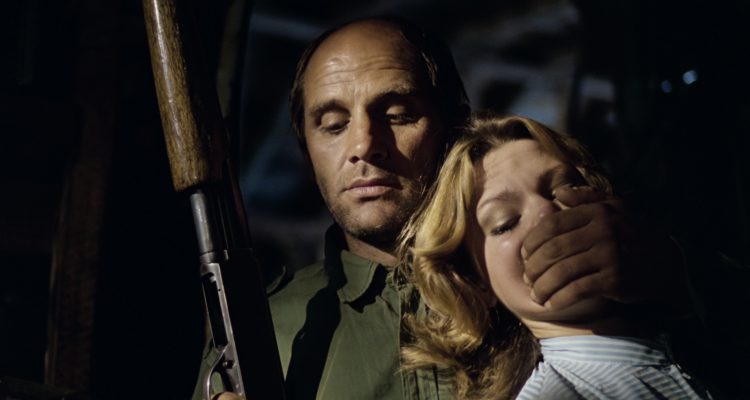Roger Donaldson/ New Zealand/ 1981/ 108mins
Available on Blu-ray Mon 28 May 2018
Toxic masculinity and the dissolution of relationships are hardly original themes. Popular media has mined the very depths of such stories countless times (be it classic films such as Kramer vs. Kramer, indie-darlings like Blue Valentine, or even sitcoms including the darkly genius It’s Always Sunny in Philadelphia). Emotional drama, haunting and uncomfortable relatability and complex characterisation are all reasons behind why audiences continue to buy into ever-changing versions of these tales, one such version being 1981’s New Zealand New Wave classic Smash Palace.
Former racing driver Al (Bruno Lawrence) finds his marriage to Jacqui (Anna Jemison) falling apart due to his jaded and selfish approach to married life. When Al believes his best friend Ray (Keith Aberdein) to have committed a major betrayal, his last hope is to keep his daughter Georgie (Greer Robson) by any means possible and salvage the only relationship he has left.
The second feature by director Roger Donaldson garnered critical acclaim at the time of its release (Roger Ebert noted that it was one of the year’s best films), and was successful enough to allow Donaldson to go on and direct bigger things in the USA such as Cocktail, Species and Dante’s Peak. However, after nearly four decades, Donaldson’s sophomore feature isn’t quite the necessary-viewing-classic that many had originally claimed.
The primary problem lies in the fact that Lawrence’s Al is in no way a sympathetic lead character. He’s selfish and ignorant of his wife’s emotional pain. Yet when things all come tumbling down he feels like he’s the one who has been wronged; so much so that he believe violent behaviour to be justified. Plenty of stories have given us insights into people that we can’t connect with, but Smash Palace plays everything so straight as if to assume that the audience are thinking “oh yes, that’s exactly how I would act!”. Unfortunately for the film, we’re not all sociopaths.
Second to this is the senseless editing that plagues the film. While this can be explained away by an outrageously tight schedule of four months between commencing shooting and the film’s premiere, it doesn’t forgive it. The movie does not flow as a cohesive piece, with awkward fade-outs and jarringly long, unexciting driving/chase scenes as well as a furiously abrupt conclusion.
And then there’s the score. The music has dated badly; an obvious product of its era, but worse than that is the sheer banality of that which accompanies the images on screen throughout.
Smash Palace is an interesting, if unoriginal, concept as well as a neat insight into the work of someone who would go on to have an entertaining and varied career in Hollywood, but it’s not the classic cinema art piece that many in 1981 claimed it to be. It’s one to check out if you’re a serious cinephile, otherwise just imagine a mash-up of Kramer vs. Kramer and Falling Down and you’re 99% of the way there.
